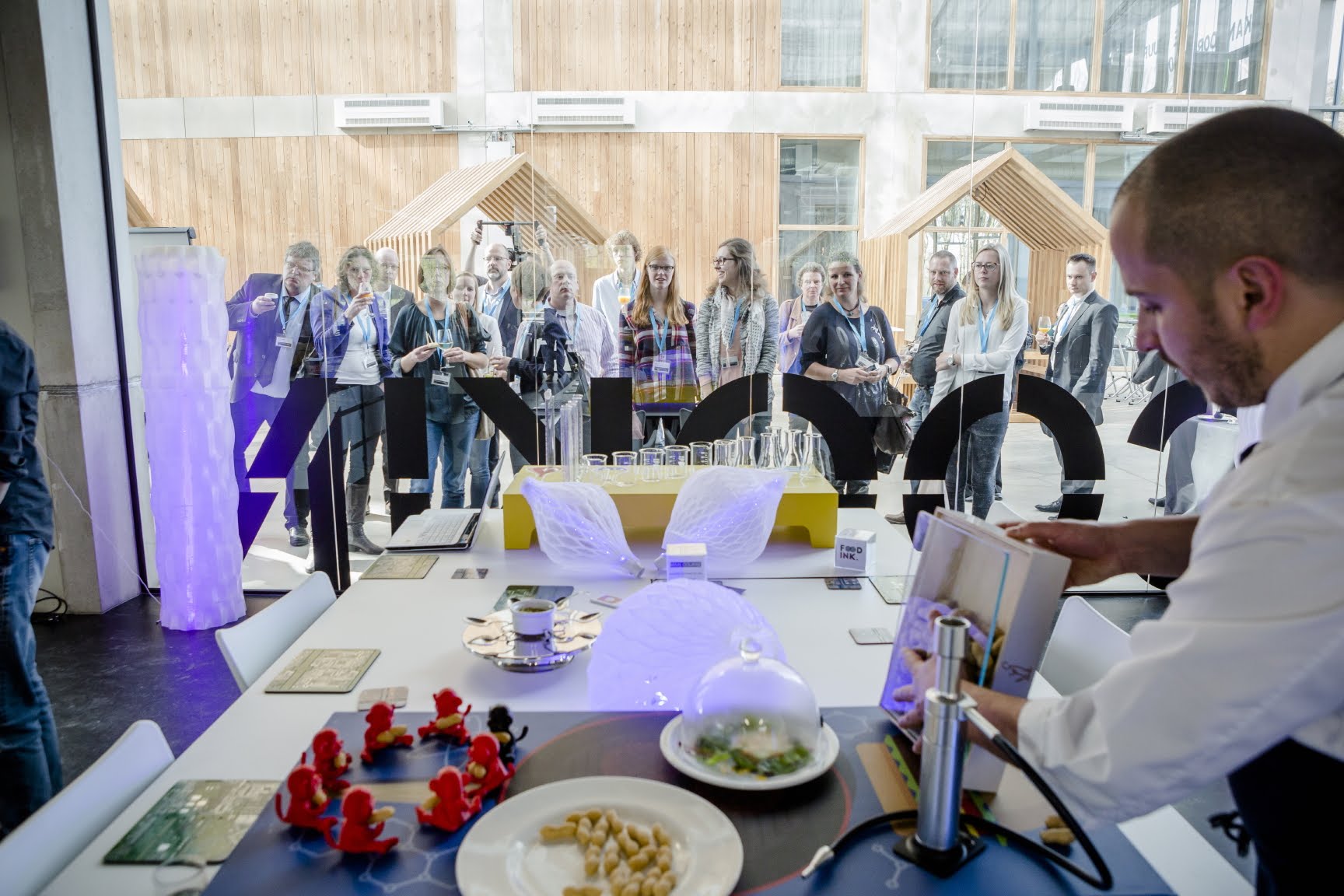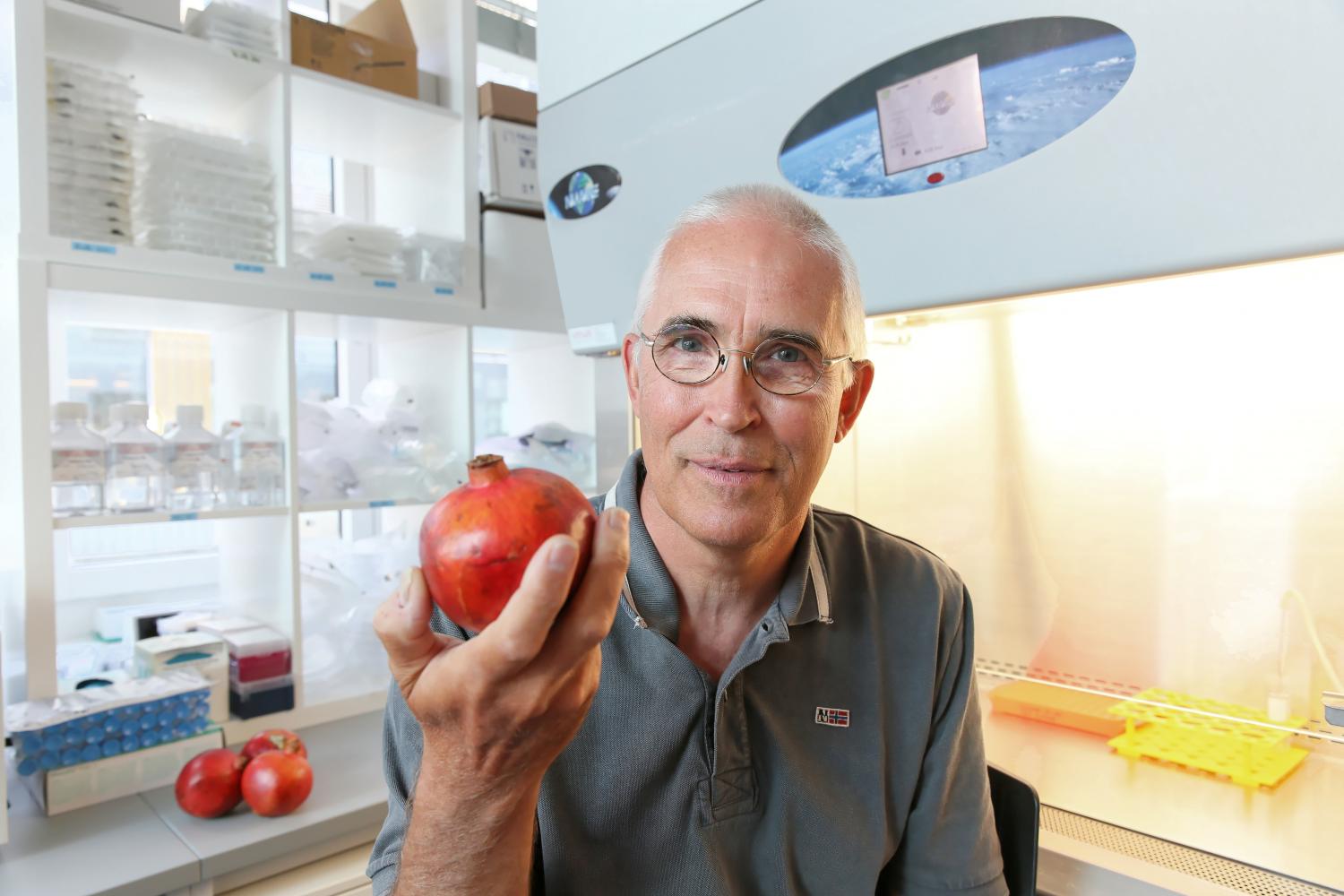Page 11062
Jul 11, 2016
Pomegranate finally reveals its powerful anti-aging secret
Posted by Bruno Henrique de Souza in categories: biotech/medical, health, life extension
Are pomegranates really the superfood we’ve been led to believe will counteract the aging process? Up to now, scientific proof has been fairly weak. And some controversial marketing tactics have led to skepticism as well. A team of scientists from EPFL and the company Amazentis wanted to explore the issue by taking a closer look at the secrets of this plump pink fruit. They discovered that a molecule in pomegranates, transformed by microbes in the gut, enables muscle cells to protect themselves against one of the major causes of aging. In nematodes and rodents, the effect is nothing short of amazing. Human clinical trials are currently underway, but these initial findings have already been published in the journal Nature Medicine.
As we age, our cells increasingly struggle to recycle their powerhouses. Called mitochondria, these inner compartments are no longer able to carry out their vital function, thus accumulate in the cell. This degradation affects the health of many tissues, including muscles, which gradually weaken over the years. A buildup of dysfunctional mitochondria is also suspected of playing a role in other diseases of aging, such as Parkinson’s disease.
One molecule plays David against the Goliath of aging
Continue reading “Pomegranate finally reveals its powerful anti-aging secret” »
Jul 11, 2016
Meet the First Artificial Animal
Posted by Sean Brazell in categories: 3D printing, bioengineering, genetics, robotics/AI
Scientists genetically engineered and 3D-printed a biohybrid being, opening the door further for lifelike robots and artificial intelligence.
By Lisa Calhoun
Jul 11, 2016
This startup wants to replace the silicon in your smartphone with diamonds
Posted by Karen Hurst in categories: 3D printing, biotech/medical, mobile phones
![]()
Synthetic diamonds and the manufacturing of diamonds in mass quantity (including 3D Printing) is going to explode over the next few years with QC, Medical devices and technologies, smartphones, etc. Again, I hope Intel, Nvidia, HP, Xerox, etc. are listening.
Chicago-based startup Akhan Semiconducton wants to replace the silicon found in most modern-day electronics with diamonds derived from methane gas.
Continue reading “This startup wants to replace the silicon in your smartphone with diamonds” »
Jul 11, 2016
Food Ink. the first 3D printing restaurant to serve nine-course 3D printed dinner in London
Posted by Karen Hurst in categories: 3D printing, food

Want a gourmet cook; 3D printing is giving that to you.
Dutch 3D printed food innovators byFlow are ready to take their Food Ink pop-up restaurant to London, where they will be setting up a gastropub to serve nine-course 3D printed dinners from 25 to 27 July.
Jul 11, 2016
Engineered human colon model could aid in cancer research
Posted by Karen Hurst in category: biotech/medical
Cornell researchers have helped develop a recellularized human colon model that could be used to track the pathogenesis of colon cancer and possibly gain insight into its spread to other organs.
Jul 11, 2016
FDA study using genetically engineered cells to treat cancer kills three people
Posted by Karen Hurst in categories: bioengineering, biotech/medical, genetics, neuroscience
(NaturalNews) Earlier this month, Juno Therapeutics, a pioneer in the field of treating cancer using genetically engineered cells, had to halt the development of its lead treatment after the death of three leukemia patients enrolled in the study.
The Seattle-based biotech company reported that the deaths of all three patients, who were in their 20s, were linked to swelling in the brain. The swelling occurred after the company added a second chemotherapy drug to the treatment procedure.
The news of the patient deaths is a big blow for the biotech startup that is developing a new experimental therapy known as chimeric antigen receptor T-cell (or CART) immunotherapy. The setback will likely delay the company’s aim of introducing it to the market by 2017, Juno executives said in a conference.
Continue reading “FDA study using genetically engineered cells to treat cancer kills three people” »
Jul 11, 2016
Research suggests common blood cancer could be prevented before it develops
Posted by Karen Hurst in category: biotech/medical
They discovered that changes in the bone marrow needed for the cancer to grow have already taken hold in the preceding condition, raising the possibility that early medical intervention could prevent this incurable type of cancer from taking root.
The research, which was funded by the blood cancer charity Bloodwise, is published in the journal Leukemia.
Myeloma affects the plasma cells, a type of white blood cell that originates in the bone marrow. Diagnosed in over 4,000 people a year in the UK, fewer than half of patients survive for longer than five years after diagnosis. Symptoms often include debilitating and painful bone damage, anemia and nausea.
Jul 11, 2016
This Food Computer Will Allow Anyone, Anywhere to Be a Farmer
Posted by Karen Hurst in categories: computing, food
Caleb Harper turned his career of designing data centers into a quest to help the next generation of farmers.
Jul 11, 2016
Stanford University Researchers Help DARPA Create Mathematical Framework for Network Pattern Discovery
Posted by Karen Hurst in categories: engineering, information science, mathematics
The Defense Advanced Research Projects Agency has demonstrated a new mathematical framework that works to help researchers discover patterns in complex scientific and engineering systems. DARPA said Thursday researchers at Stanford University created algorithms designed to explore patterns in data in order to gain insights into network structure and function under the Simplifying Complexity in Scientific Discovery [ ].














